
Brigham Young was an American religious leader and politician. He was the second president of the Church of Jesus Christ of Latter-day Saints from 1847 until his death in 1877. During his time as church president, Young led his followers, the Mormon pioneers, west from Nauvoo, Illinois, to the Salt Lake Valley. He founded Salt Lake City and served as the first governor of the Utah Territory. Young also worked to establish the learning institutions that would later become the University of Utah and Brigham Young University. A polygamist, Young had at least 56 wives and 57 children. He formalized the prohibition of black men attaining priesthood, and led the church in the Utah War against the United States.
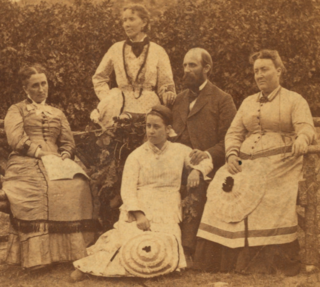
Polygamy was practiced by leaders of the Church of Jesus Christ of Latter-day Saints for more than half of the 19th century, and practiced publicly from 1852 to 1890 by between 20 and 30 percent of Latter-day Saint families.

John Taylor was an English-born religious leader who served as the third president of the Church of Jesus Christ of Latter-day Saints from 1880 to 1887. He is the first and so far only president of the LDS Church to have been born outside the United States.
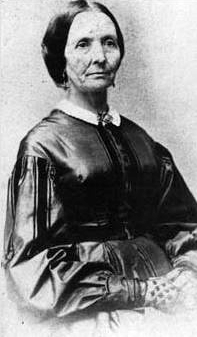
Eliza Roxey Snow was one of the most celebrated Latter Day Saint women of the nineteenth century. A renowned poet, she chronicled history, celebrated nature and relationships, and expounded scripture and doctrine. Snow was married to Joseph Smith as a plural wife and was openly a plural wife of Brigham Young after Smith's death. Snow was the second general president of the Relief Society of the Church of Jesus Christ of Latter-day Saints, which she reestablished in the Utah Territory in 1866. She was also the older sister of Lorenzo Snow, the church's fifth president.
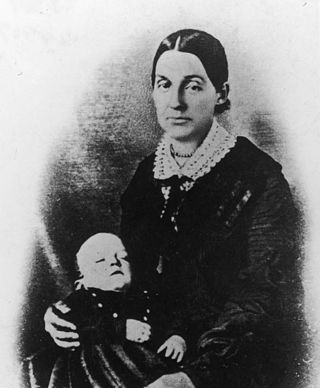
Emma Hale Smith Bidamon was an American homesteader, the first wife of Joseph Smith, and a leader in the early days of the Latter Day Saint movement, both during Smith's lifetime and afterward as a member of the Reorganized Church of Jesus Christ of Latter Day Saints. In 1842, when the Ladies' Relief Society of Nauvoo was formed as a women's service organization, she was elected by its members as the organization's first president.

Ann Eliza Young also known as Ann Eliza Webb Dee Young Denning was one of Brigham Young's fifty-five wives and later a critic of polygamy. Her autobiography, Wife No. 19, was a recollection of her experiences in the Church of Jesus Christ of Latter-day Saints. She grew up in a polygamous household which moved to Utah during the Mormon migration. Ann Eliza was married and divorced three times: first to James Dee, then Young, and finally Moses Denning. Her divorce from Young reached a national audience when Ann Eliza sued with allegations of neglect, cruel treatment, and desertion. She was born a member of the LDS Church, but was excommunicated shortly after her public divorce from Young.
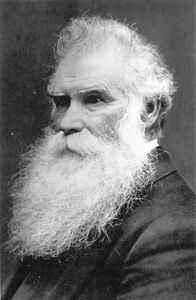
Orson Pratt Sr. was an American religious leader and mathematician who was an original member of the Quorum of the Twelve Apostles of the Church of Christ. He became a member of the Quorum of the Twelve of the Church of Jesus Christ of Latter-day Saints and was a leading Mormon theologian and writer until his death.

Polygamy in the Church of Jesus Christ of Latter Day Saints, or plural marriage, is generally believed to have originated with the founder of Mormonism, Joseph Smith. According to several of his associates, Smith taught that polygamy was a divine commandment and practiced it personally, by some accounts marrying more than 30 women, some of whom had existing marriages to other men. Evidence for Smith's polygamy is provided by the church's "sealing" records, affidavits, letters, journals, and diaries. However, until his death, Smith and the leading church quorums denied that he preached or practiced polygamy. Smith's son Joseph Smith III, his widow Emma Smith, and the Reorganized Church of Jesus Christ of Latter Day Saints challenged the evidence and taught that Joseph Smith had opposed polygamy. They instead claimed that Brigham Young, the head of the Church of Jesus Christ of Latter-day Saints, introduced plural marriage after Smith's death. In 1852, leaders of the Utah-based LDS Church publicly announced the doctrine of polygamy.

John Cook Bennett was an American physician and briefly a ranking and influential leader of the Latter Day Saint movement, who acted as mayor of Nauvoo, Illinois, and Major-General of the Nauvoo Legion in the early 1840s.

Zina Diantha Huntington Young was an American social activist and religious leader who served as the third general president of the Relief Society of the Church of Jesus Christ of Latter-day Saints from 1888 until her death. She practiced polyandry as the wife of Joseph Smith, and later Brigham Young, each of whom she married while she was still married to her first husband, Henry Jacobs. She is among the most well-documented healers in LDS Church history, at one point performing hundreds of washing, anointing, and sealing healing rituals every year. Young was also known for speaking in tongues and prophesying. She learned midwifery as a young girl and later made contributions to the healthcare industry in Utah Territory, including assisting in the organization of the Deseret Hospital and establishing a nursing school. Young was also involved in the women's suffrage movement, attending the National Woman Suffrage Association and serving as the vice president of the Utah chapter of the National Council of Women.

William Law was an important figure in the early history of the Latter Day Saint movement, holding a position in the church's First Presidency under Joseph Smith Jr. Law was later excommunicated for apostasy from the church and was founder of the short-lived True Church of Jesus Christ of Latter Day Saints. In this capacity, he published a single edition of the Nauvoo Expositor, the destruction of which set in motion a chain of events that eventually led to Smith's death.

Harriet Amelia Folsom Young was a pioneer and an early member of the Church of Jesus Christ of Latter-day Saints, as well as a cultural and political figure in Salt Lake City, Utah. An accomplished pianist and vocalist, Folsom was the fifty-first plural wife of Brigham Young, who served as the church's second president.
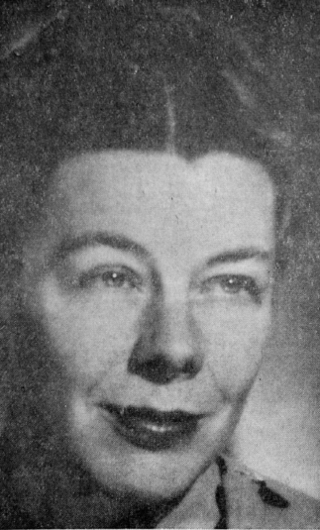
Virginia Louise Sorensen, also credited as Virginia Sorenson, was an American regionalist writer. Her role in Utah and Mormon literature places her within the "lost generation" of Mormon writers. She was awarded the 1957 Newbery Medal for her children's novel, Miracles on Maple Hill.

Saints (1984) is a historical fiction novel by American writer Orson Scott Card. It tells the story of the fictional protagonist, Dinah Kirkham, a native of Manchester, England, who immigrates to the United States and becomes one of the plural wives of Joseph Smith, founder of the Latter Day Saint movement.
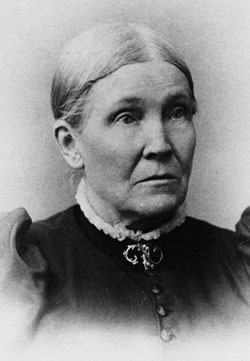
Mary Elizabeth Rollins Lightner was a member of the Church of Jesus Christ of Latter-day Saints and a Mormon pioneer. One of the plural wives of Joseph Smith and Brigham Young, Lightner is credited with rescuing papers that were later published as part of the Doctrine and Covenants from anti-Mormon mobs.

The following outline is provided as an overview of and a topical guide to the Church of Jesus Christ of Latter-day Saints.

The following outline is provided as an overview of and topical guide to the life and influence of Joseph Smith:















